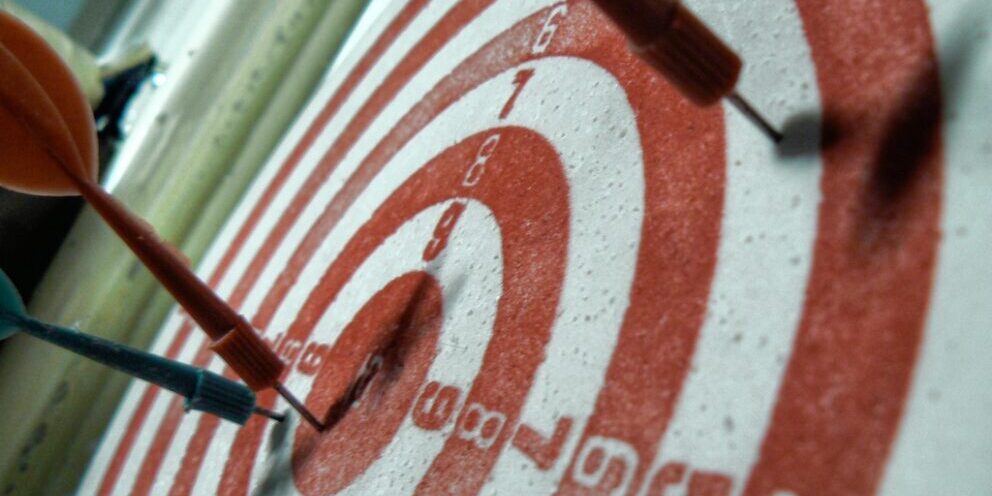Frequently Asked Questions About ICPs, Buyer Personas & Buying Committees

Summary
In this blog, we've compiled the most frequently asked questions B2B marketers ask when developing an Ideal Customer Profile (ICP), creating personas, and identifying the buying committee. We cover everything from defining your ICP to how personas are used and what makes a B2B buying committee different from individual decision-making in B2C. Whether building from scratch or refining your go-to-market foundation, these answers will help guide your strategy.
By Win Dean-Salyards, Senior Marketing Consultant at Heinz Marketing
In B2B marketing, precision matters. Knowing who you’re selling to—and how they make buying decisions—is key to building effective campaigns, aligning sales and marketing, and accelerating pipeline. But many teams struggle to create actionable buyer personas, identify the right accounts, or understand who’s on the buying committee.
In this blog, we’ve compiled the most frequently asked questions B2B marketers ask when building their Ideal Customer Profile (ICP), developing buyer personas, and mapping the buying committee.
Ideal Customer Profiles (ICP)
What is an Ideal Customer Profile (ICP)?
An Ideal Customer Profile (ICP) defines the type of company that would benefit most from your product or service and is most likely to buy and succeed with it. It’s typically described at a firmographic level—industry, size, revenue, geography, and key characteristics like technology stack or compliance needs.
What are the key components of an ICP?
Key components of an ICP include:
- Industry and vertical
- Company size (employees and/or revenue)
- Geography
- Pain points or needs
- Buying triggers
- Technology environment
- External drivers
How do you choose an ICP?
Choose an ICP by analyzing your best customers—those who see value quickly, renew often, and have strong retention. Look at patterns across company size, industry, use cases, and decision-making dynamics. Then, validate with sales and customer success to ensure alignment.
How do you create an ICP?
Gather data from your CRM and customer base to identify your most successful accounts. Segment them by firmographics and technographics, then conduct interviews with customers and internal stakeholders to surface qualitative traits. Use this data to build a documented, cross-functional ICP definition.
How is an ICP used?
ICPs align go-to-market teams. Marketing uses them to target the right accounts, content, and channels. Sales uses them to prioritize outreach and qualification. Product and CS teams use them to ensure the company builds and supports the right customers for long-term value.
Buyer Personas
What is a B2B buyer persona?
A B2B buyer persona is a detailed representation of a specific role involved in the buying process. It includes job responsibilities, goals, pain points, buying motivations, and how that person evaluates vendors. Personas are typically tied to the ICP and represent roles across the buying committee.
What is the difference between a B2B and a B2C buyer persona?
B2B buyer personas represent individuals making decisions on behalf of a company, often as part of a group. They focus on business goals, cross-functional collaboration, and professional outcomes. B2C personas focus on individual consumers making personal purchase decisions, driven by lifestyle, emotion, and convenience.
How do you create personas?
Create personas by interviewing customers, sales reps, and other stakeholders. Identify common job titles, priorities, frustrations, and decision drivers. Use this data to document each persona’s role in the buying process, content needs, objections, and preferred channels.
How do I action the personas I’ve created?
Use personas to tailor your messaging, content, and campaigns. Match personas to buying stages and create relevant content paths. Train sales teams to speak to different personas’ priorities and align them with value propositions and proof points.
Buying Committees
What is a buying committee?
A buying committee is the group of people involved in evaluating and purchasing a B2B product or service. It typically includes multiple roles—decision makers, influencers, users, technical evaluators, and procurement—each with distinct priorities.
Who makes up the buying committee?
The buying committee often includes:
- Economic Buyer or Business Decision Maker (BDM): Controls the final budget decisions.
- Technical Decision Maker: Can say “no” if the technical aspects of a product aren’t adequate.
- Champion or Internal Advocate: The primary partner to your sales team through the sales process. They recommend to the BDM.
- Business or Technical Influencers: Often the user, they often do the initial research with the champion and do initial vetting.
- Validators such as Procurement or Legal: One of the final hurdles to get through before closing. Don’t forget them.
- Business Stakeholders: Tertiary business stakeholders, often the executive counterparts to the BDM.
How is a buying committee used?
Marketing and sales use the buying committee map to tailor each role’s outreach, content, and messaging. Understanding who’s involved and how they influence decisions helps coordinate multi-threaded engagement and improves conversion across longer buying cycles.
Using ICPs, Personas & Buying Committees
Who uses your ICP and buyer personas?
Marketing, sales, customer success, product, and executive teams all use ICPs and personas. They guide campaign targeting, sales messaging, customer onboarding, and product road-mapping. The clearer your personas and ICP, the better your teams can align around shared goals.
Summary
Defining your Ideal Customer Profile, building targeted buyer personas, and mapping the buying committee are foundational to any successful B2B go-to-market strategy. Each element helps ensure you’re reaching the right people with the right message at the right time.
Want help creating or refining your ICP, personas, or buying committee strategy? Reach out to us at acceleration@heinzmarketing.com to connect.






